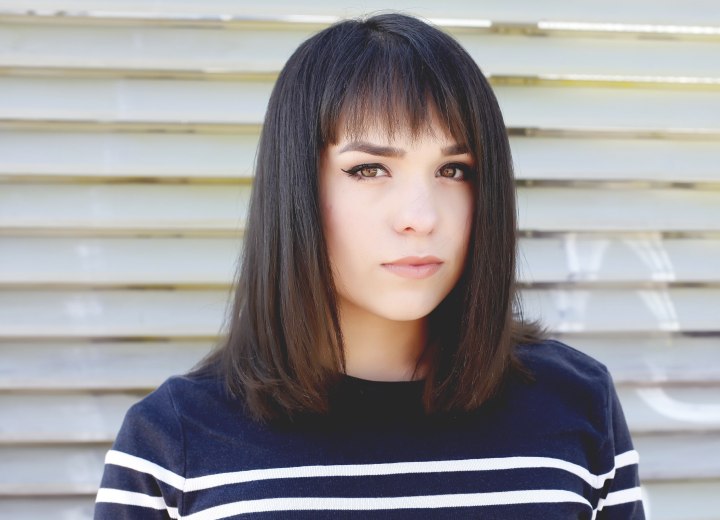Hair Thickness Recovery

A: The good news is that yes, your bangs will return to their original thickness, but it's going to require some patience on your part. When a hairdresser "thins" hair, they're essentially cutting or removing some of the hair strands at various lengths to reduce bulk and create a more textured appearance. The hair follicles themselves aren't damaged in this process, so the shortened hairs will continue to grow back at their normal rate of about half an inch per month.
To help your bangs recover and prevent further damage, you'll want to establish a hair care routine focused on moisture retention and gentle handling. Start incorporating deep conditioning treatments into your weekly routine at least once, though twice a week would be even better while your bangs are recovering. Choose a rich, moisturizing conditioner or a specialized deep treatment mask designed for damaged or porous hair. Apply the conditioner generously to your damp hair, paying special attention to your bangs area, then cover your hair with a plastic shower cap or processing cap. The key is to add gentle heat to help the conditioning agents penetrate more deeply into the hair shaft. You can do this by wrapping your head in a warm, damp towel or using a hair dryer on low heat for a few minutes. Let the treatment sit for at least 20 minutes, then rinse thoroughly with cool water to help seal the hair cuticles and lock in moisture.
Beyond your deep conditioning sessions, daily moisture maintenance is crucial. Even on days when you don't shampoo your hair, make sure you're applying a leave-in conditioner or lightweight moisturizing cream to your bangs and the rest of your hair. This is particularly important for wavy, frizzy hair types, which tend to be naturally drier because the oils from your scalp have a harder time traveling down the curved hair shaft.
Gentle handling is essential during this recovery period. Avoid aggressive brushing or combing, especially when your hair is wet and at its most vulnerable state. Instead, use a wide-tooth comb or a brush specifically designed for wet hair, and work through tangles starting from the ends and gradually working your way up to the roots.
When styling your bangs, try to minimize heat styling tools like blow dryers, flat irons, or curling irons, as these can further dry out and damage already fragile hair. If you must use heat styling tools, always apply a heat protectant product first and use the lowest effective temperature setting.
The timeline for your bangs to fully recover will depend on how short they were cut and how fast your individual hair grows, but you can expect to see noticeable improvement in thickness and overall appearance within two to three months.
©Hairfinder.com
See also:
What exactly is deep conditioning?
Tips for better bangs
Does hair thickening spray really work?